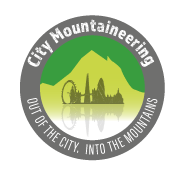getting one's bearings
Having fixed your position at a particular grid reference on your map and having discerned the difference between your orienting lines and your orienting arrow on your compass, where is that you wish to go and how might you get there? Are you looking for a sunny spot out of the wind for a lunch break, or trying to find your way back to your car or tent? Either way, you need an objective or target location to navigate toward from your current position.
Firstly, set your map - 'setting the map' simply means having it pointing the right way - and have a look around. Note the features - paths, roads, walls, rivers, power lines, buildings - that are defined on your map and that you can see.
The simplest way to achieve your objective from your location would be to find a path linking the two points and to follow it! Similarly, having set your map in fine weather, the surrounding features and terrain variation can be easily identifiable from ground to map and vice versa. Picking out the features that you can actually see from where you are and that you will then see en route to your target and then walking between them is another method to get you where you wish to go. Mentally ticking off each feature you pass as you go will keep you on course.
But what if you cannot see your target; if the target is on the other side of a hill, or if the weather has turned nasty, or if you are in the dark?
Taking a bearing accurately and accurately walking along it will allow you to progress from your location to your objective even in the worst fog or a blizzard or at night.
There are a number of ways to describe the same process and nobody has released a video that, to my mind, nails it completely. Hence, the three different takes on the same subject from eminent experts as published by the likes of the BMC, Ordnance Survey, Glenmore Lodge - Scotland's National Mountain Training Centre.
We begin with a return to the beard, Chris Townsend ...
... before giving Steve Backshall a go ...
... and then walking a bearing with Glenmore Lodge ...
Some of the terminology used - 'aiming off', 'catching features', 'contours', and 'magnetic variation' aka 'declination' - is a bit more advanced and the subject for another set of posts. For now we will concentrate upon the basic principles and leave practical application for another day.
Silva, the compass manufacturer, released a video showing the practical value of the subjects covered so far in use in the field. It is a bit longer and has a cheesy voice-over but it's well worth a watch as it provides a high-level overview of the navigation basics that you actually need know when it comes to getting around the hills safely.
Bearing setting using the 'Silva 1-2-3 system', described at 2:42, has proven a useful way for many to remember how to take a bearing quickly and easily.






































